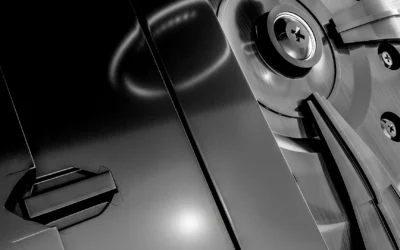An Era of Development for Automotive Optics: Merging Design and Development
The automotive optics industry is evolving. The experiences of today’s automotive enthusiasts are being shaped by design innovation and technical advancements. Sensor- and camera-equipped optical systems, such as headlights and taillights, are now essential components for vehicle performance, safety, and appearance.
By 2026, the global automotive lighting market is expected to reach $38 billion at a compound yearly growth rate of 5.7%, according to Allied Market Research. The industry is starting to push the limits of what is possible in auto light design as new issues emerge.
Key Trends Driving Innovation
1. Technological Integration
Today, automotive optics goes beyond just producing light. It incorporates technologies that aid, ensure, and enhance safety. They include weather sensitive adaptive headlights, laser lighting systems, and matrix LEDs, all of which improve visibility and facilitate road safety. Further, McKinsey & Company points out that adaptive beam headlights can be extremely beneficial in accident prevention, especially in dark or rainy weather.
Bosch, likewise, has progressed in this sector by developing the “Digital Light” technology which projects warnings and symbols on the road to improve the coordination between vehicles and their drivers. A spokesman for Bosch has said, “Lighting is evolving into an essential interface between the car and its surroundings.”
2. Sustainability in Focus
The global push for sustainability has had a profound impact on automotive manufacturing. Companies such as Hella are developing energy-efficient optical systems to minimise power consumption. Simultaneously, brands are adopting eco-friendly practices like lead-free production processes and renewable energy usage.
3. Enhanced Safety Features
Safety remains a primary focus, with innovations like UV-blocking optics, glare-reducing technologies, and electrochromic lenses leading the charge. These systems improve visibility, reduce eye strain, and help mitigate accidents. For example, electrochromic lenses can reduce light intensity by up to 75%, ensuring clearer vision even in challenging environments.
Collaboration Between Design and Development
Design and development must work together to produce cutting-edge automobile optics. To develop safer and more intelligent solutions, automakers are collaborating closely with suppliers of optical technology.
Another breakthrough in this area is Valeo’s fully adjustable lighting system. It provides an unmatched level of accuracy by fusing real-time road analysis with artificial intelligence. When it comes to lighting solutions designed for autonomous vehicles, Japanese optics giant Koito Manufacturing is setting the standard for performance and safety even in driverless situations.
Challenges Shaping the Future
Although there has been improvement, the industry still faces obstacles:
Complex Technology:
High-end optical system development demands trans-disciplinary knowledge, which raises costs and lengthens development cycles.
Regulatory Pressure:
The new product introductions must now innovate while keeping compliance at the forefront. Due to strict environmental and safety standards being imposed around the world, there is a need now more than ever to think sustainably. Higher standards for energy efficiency and lower emissions are being imposed by organisations such as the European Union, which will have a direct impact on the selection of materials and industrial techniques.
Cost Management:
Although advanced technologies improve performance, they are usually more expensive. Koito’s and Intretech’s European facilities are examples of nearshoring manufacturing, so that customers can still benefit while not compromising on quality or cost.
The Road Ahead
Augmented Reality Integration
Heads-up displays (HUDs) that show data onto windscreens are gradually making their way into common consumer markets, however the complexity of its manufacturing is still high. Companies like Continental are still managing to ace this technology. These systems improve driver awareness and safety by displaying navigation, hazard warnings, and vehicle diagnostics in real time.
Personalisation and Design
Lighting systems are becoming highly customisable, aligning with consumer preferences. Deloitte (report link) reports that 70% of car buyers now consider lighting as a key design feature.
Autonomous Vehicles
As driverless technology advances, so does the reliance on optics. LiDAR systems and advanced sensors, which depend heavily on optical precision, are extremely important for navigation and obstacle detection.
The Intretech Edge
With more than two decades of expertise in manufacturing for the automotive industry, Intretech is now recognised as a trusted partner globally. We excel in vertical integration, sustainability, and innovation, supported by 1,600 engineers across 10 factories and achieving a $1.1 billion revenue milestone in 2021. Our facilities in Hungary and Mexico operate on vertically integrated models that streamline production through tooling, moulding, PCBA, and automation. Our commitment to smart and sustainable manufacturing enables tech-advancements in automotive optics. Thus, enabling a collaboration of design and development that has the capability to deliver remarkable results for the evolving automotive industry.
Automotive optics are undergoing a renaissance, with design and development working hand in hand to create intelligent, sustainable, and aesthetically refined systems. By addressing safety, environmental concerns, and consumer demand, the industry is poised to shape a safer and more dynamic future for drivers and passengers alike.
Explore more related content
Poor PCB Design, Poor Gameplay: EMI and SI in Gaming Hardware
Poor PCB Design, Poor Gameplay: EMI and SI in Gaming HardwareFixing a signal integrity issue during schematic design...
Why Material Selection Matters in High-Fidelity Audio Manufacturing
Why Material Selection Matters in High-Fidelity Audio ManufacturingHigh-fidelity (hi-fi) audio manufacturing is as...
Why Passive Safety Matters for Automotive Businesses
Why Passive Safety Matters for Automotive BusinessesIn the competitive landscape of automobiles, driver safety is not...






